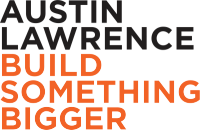The practice of using gated content for online lead generation isn’t new; however, it is one we often see misapplied. In their rush to extract value from their content, many websites often gate content they shouldn’t. Ironically, this often means a decrease in lead volume. Of course, you also don’t want to give away everything for free. This extreme means you miss out on extracting value from the content you’re spending time, and often budget, to create.
At the heart of this issue is that businesses lose sight of the inherent need to transfer value fairly and instead require something for everything. Gating content, or requiring site visitors to complete a form in order to access the material, is built on the assumption that your content is of value to the visitor. The value of the content should determine a) if the content is gated and b) your asking price aka what data your form requires.As a general rule, if you are asking somebody to give you their information, then you must give them something of value in return. And even if it does add value, that merely means you should consider gating your content. That’s because the key factor to answering the “to gate or not to gate” question is that the item must be of relatively equal value to the visitor as their contact information is to you. If it isn’t, or doesn’t appear to be, then your visitors likely won’t be willing to give you any information to obtain it.
This often means you can decide whether or not to gate content based on how it aligns with the buyer’s journey. Awareness stage content should take be written for visitors looking to educate themselves about a topic or issue. It may take many forms, but our favorites are:
- Blog posts - particularly “how to” or “why to” guides
- Infographics - be sure they are clear to all viewers, even those unfamiliar with the topic
- Curated content - an efficient and effective way to create content
- Testimonials - the best way to win people over, so share the experiences of your already happy customers!
Awareness stage content should never be gated because this information attracts potential clients and helps you establish your thought leadership. This content should be readily available and easily accessible to potential leads, as they’re likely to read it while they’ve either not yet developed a problem or have yet to realize they have one, so they won’t feel motivated to commit to a form fill yet.
Conversely, as buyers look to identify and consider solutions to their problem, they will find greater value in related content. They’ve firmly identified a problem they need to solve and are willing to exchange their information for your information, which may help them address it. As buyers move into the consideration and then decision stage, they are doing heavier, more targeted research and looking for substantive insight and decision making tools. Here are examples of great middle and bottom of funnel content
that should always be gated:
- Self-assessments - A valuable way to help a visitor understand if they’re ready to make a purchase decision
- Checklists - These may either help determine readiness or actually prepare the visitor for the next step
- Whitepapers - Brief guides on a specific topic or issue
- eBooks - More thorough, substantive guides
- Webinars - Provided the topic is evergreen
- Templates - Evaluation templates, organization tools, etc.
One final consideration when determining whether or not to gate content is to make sure it is adding value to the type of site visitor you want to attract. A checklist for selecting software you’re trying to phase out or an eBook for executives may not be helpful when your personas are all junior staff. If the content doesn’t attract the right traffic at the right time, then it probably doesn’t belong on your site, and you may need to evaluate your Inbound strategy. Remember, not all traffic is created equal, and generating poor quality leads can waste time for your business development rep or sales team – ultimately becoming more costly than not generating any lead at all.






